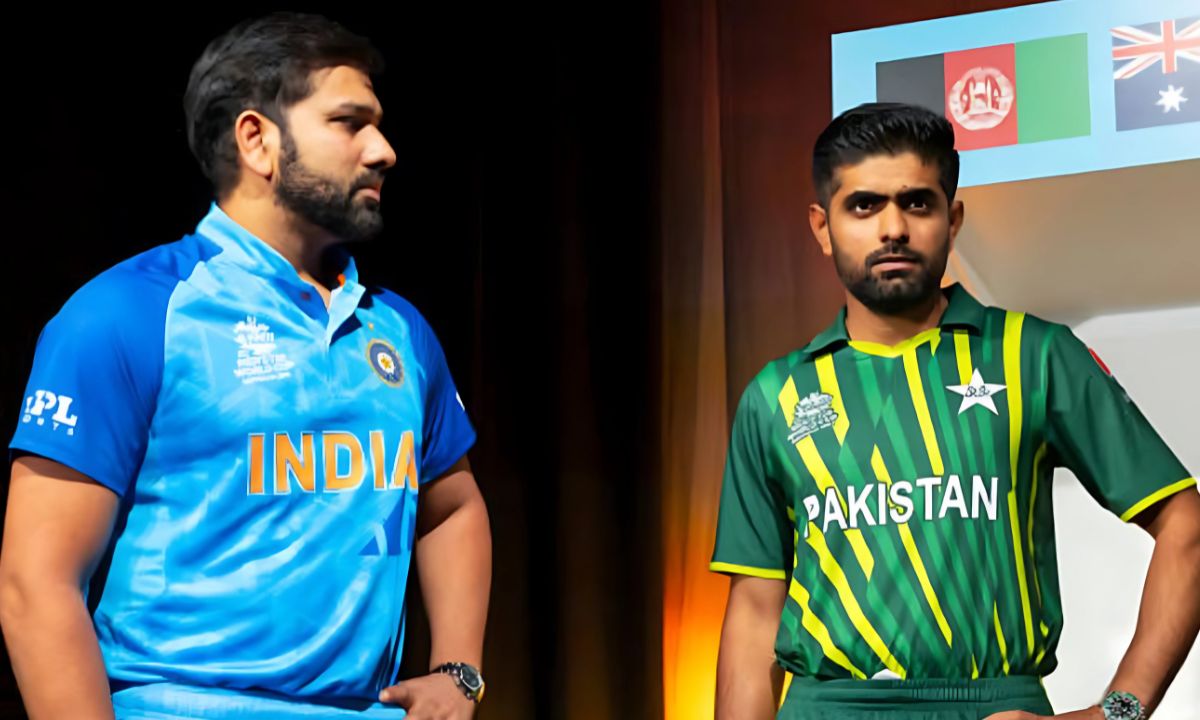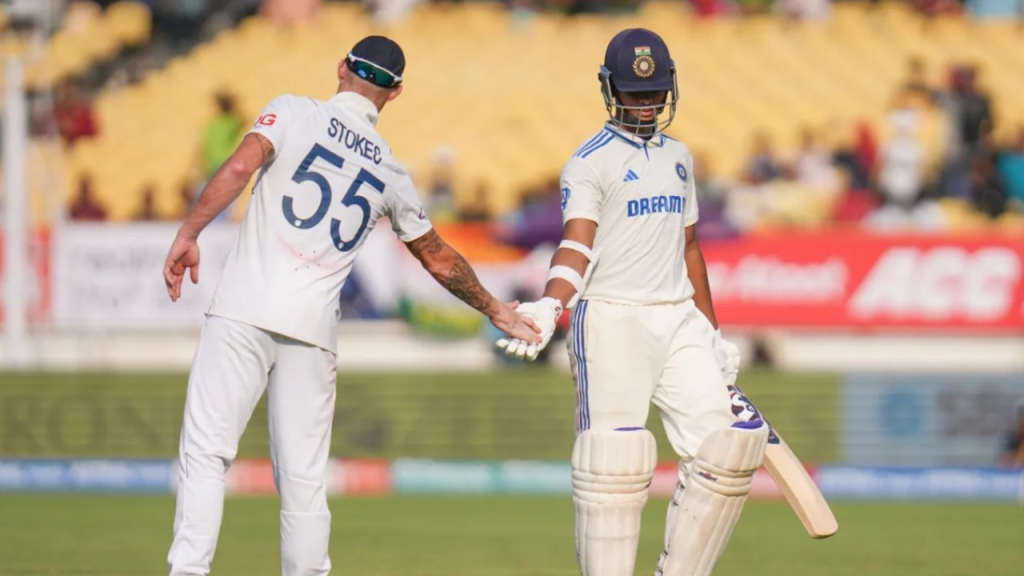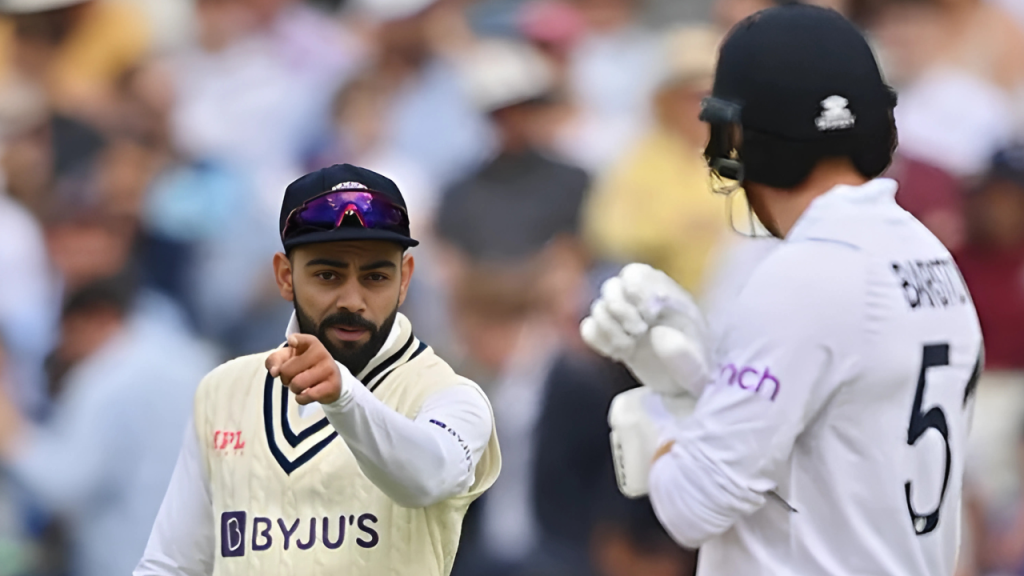In the world of international cricket, few rivalries capture global attention quite like that between India and Pakistan. The intensity of this rivalry often transcends the boundaries of sport, intertwining with politics, culture, and national pride. It’s within this complex tapestry that a recent controversy has emerged, centering on the absence of the Indian flag at Karachi’s National Stadium ahead of the ICC Champions Trophy 2025.
The Pakistan Cricket Board’s (PCB) clarification regarding this absence has reignited discussions about cricket diplomacy, international relations, and the challenges of hosting major tournaments in a region marked by historical tensions. This article delves deep into the nuances of the PCB’s decision, its implications for the upcoming Champions Trophy, and what it means for the future of India-Pakistan cricket relations.
The Controversy Unfolds: Social Media Erupts

The Viral Video That Started It All
On February 17, 2025, a video began circulating on social media platforms, particularly on X (formerly known as Twitter). The footage showed Karachi’s National Stadium adorned with flags of various nations participating in the upcoming ICC Champions Trophy 2025. However, one notable absence caught the eye of viewers worldwide – the Indian flag was nowhere to be seen.
Within hours, the video had gone viral, sparking heated debates and discussions across social media platforms. Cricket fans, pundits, and even political commentators weighed in on the perceived slight. Some viewed it as a deliberate snub by Pakistan, while others speculated about the political motivations behind the decision.
Initial Reactions and Speculations
The initial public reaction was swift and varied:
- Calls for Boycott: Some Indian fans called for their team to boycott the tournament, viewing the flag’s absence as disrespectful to their nation.
- Political Interpretations: Political analysts from both countries saw the incident as a reflection of the ongoing tensions between India and Pakistan.
- Confusion Among Fans: Many cricket enthusiasts expressed confusion, given that India was a confirmed participant in the Champions Trophy.
- Demands for Explanation: There were widespread calls for the PCB and the International Cricket Council (ICC) to provide an official explanation for the flag’s absence.
As the controversy gained momentum, it became clear that an official statement from the PCB was necessary to address the growing concerns and speculations.
PCB’s Clarification: Unraveling the Decision
The Official Statement
In response to the mounting controversy, the Pakistan Cricket Board issued an official statement clarifying the situation. A PCB source, speaking to IANS, provided the following explanation:
“As you know, India is not coming to Pakistan to play its matches during the ICC Champions Trophy 2025; the National Stadium in Karachi, Rawalpindi Cricket Stadium and the Gaddafi Stadium in Lahore have hoisted flags of countries that are going to play at the said venues.”
This statement shed light on the rationale behind the absence of the Indian flag, emphasizing that the decision was based on logistical considerations rather than political motivations.
Breaking Down the PCB’s Explanation
The PCB’s clarification can be dissected into several key points:
- Venue-Specific Flag Display: The flags displayed at each stadium correspond only to the teams scheduled to play at that particular venue.
- India’s Schedule in Dubai: As per the tournament’s hybrid model, India is set to play all its matches in Dubai, not in Pakistan.
- Consistency in Approach: The PCB applied this logic uniformly, as evidenced by the absence of Bangladesh’s flag, which was also explained due to their first match being scheduled in Dubai.
- Adherence to Tournament Structure: The flag placement reflects the unique structure of the 2025 Champions Trophy, which is being held across multiple countries due to political considerations.
This explanation aimed to defuse the situation by presenting a logical, tournament-specific reason for the Indian flag’s absence, rather than any diplomatic or political motive.
The Hybrid Model: A Unique Tournament Structure
Understanding the 2025 Champions Trophy Format
To fully grasp the context of the PCB’s decision, it’s crucial to understand the unique format of the 2025 ICC Champions Trophy. This tournament marks a departure from traditional single-country hosting, instead adopting a hybrid model that spans multiple nations.
Key aspects of this hybrid model include:
- Multi-Country Hosting: The tournament is primarily hosted by Pakistan, with some matches scheduled in the United Arab Emirates (UAE).
- India’s Participation: Due to ongoing political tensions, India’s matches are all scheduled to take place in Dubai, UAE.
- Flexible Scheduling: This model allows for greater flexibility in accommodating geopolitical considerations while still enabling a full tournament.
- Precedent Setting: This format could potentially serve as a template for future tournaments in regions with complex political dynamics.
The Role of the ICC in Shaping the Tournament
The International Cricket Council played a pivotal role in developing and implementing this hybrid model. Their involvement was crucial in several ways:
- Mediating Between Boards: The ICC worked to find a compromise that would allow the tournament to proceed with full participation.
- Ensuring Fair Play: The council had to balance competitive fairness with political realities.
- Logistical Challenges: Coordinating a tournament across multiple countries presented unique logistical hurdles that the ICC had to overcome.
- Maintaining Neutrality: Throughout the process, the ICC strived to maintain a neutral stance, focusing on the sport rather than political considerations.
The hybrid model represents a significant diplomatic achievement, allowing for the inclusion of all teams while respecting the complex geopolitical landscape of the region.
Historical Context: India-Pakistan Cricket Relations
A Legacy of Rivalry and Reconciliation
The controversy surrounding the Indian flag at Karachi’s stadium is but the latest chapter in the long and complex history of India-Pakistan cricket relations. To understand the significance of this incident, it’s essential to look back at the historical context of this cricketing rivalry.
- Birth of a Rivalry (1952): The first Test match between India and Pakistan was played on October 16, 1952, marking the beginning of one of cricket’s most intense rivalries.
- Political Tensions and Cricket: Throughout the years, the cricket field has often served as a proxy battlefield for larger political conflicts between the two nations.
- Periods of Cricketing Diplomacy: There have been instances where cricket has been used as a tool for diplomacy, with matches and tours serving to ease tensions between the countries.
- Interruptions and Resumptions: Bilateral series between India and Pakistan have been frequently interrupted due to political tensions, with long gaps between tours.
- ICC Tournament Encounters: In recent years, India-Pakistan cricket matches have been largely limited to ICC tournaments and the Asia Cup, making these encounters even more significant.
Statistical Insights into the Rivalry
The India-Pakistan cricket rivalry is not just emotionally charged but also statistically significant:
- ODI Head-to-Head: In 136 ODI matches between the two sides, Pakistan has won 73 while India has won 55.
- T20I Dominance: India holds a significant advantage in T20 Internationals, winning 9 out of 12 matches against Pakistan.
- Test Match History: Out of 58 Test matches played between the two nations, 38 have ended in draws, with Pakistan winning 11 and India 9.
- Recent Trends: In the last decade, India has dominated the rivalry, winning 10 out of 14 ODI matches played between 2010 and 2020.
These statistics underscore the competitive nature of the rivalry and help explain why every aspect of India-Pakistan cricket encounters, including the display of national symbols, is scrutinized so intensely.
The Impact on Fan Sentiments and Tournament Atmosphere
Emotional Investment of Cricket Fans
The absence of the Indian flag and the subsequent clarification by the PCB have had a significant impact on fan sentiments on both sides of the border. Cricket, especially when it involves India and Pakistan, is more than just a sport – it’s an emotional experience that connects deeply with national identity.
- Indian Fan Perspective:
- Many Indian fans initially felt disrespected by the perceived omission of their national flag.
- The PCB’s explanation has been met with mixed reactions, with some accepting the logistical reasoning while others remain skeptical.
- There’s a sense of disappointment among fans who hoped to see their team play in Pakistan.
- Pakistani Fan Viewpoint:
- Pakistani cricket enthusiasts are excited about hosting a major tournament but are disappointed by the limited participation of Indian players on their soil.
- There’s a general understanding of the PCB’s decision, with many fans supporting the board’s adherence to the tournament structure.
- Some express frustration at the continued impact of political tensions on sporting events.
- Neutral Cricket Fans:
- Fans from other countries have been observing the controversy with interest, recognizing it as another chapter in the storied India-Pakistan cricket saga.
- There’s a general hope that the tournament will proceed smoothly despite the initial controversy.
Anticipated Atmosphere During the Tournament
The flag controversy and its resolution are likely to have lasting effects on the atmosphere of the 2025 Champions Trophy:
- Heightened Security Measures: Given the sensitivity surrounding India-Pakistan matches, security arrangements are expected to be even more stringent.
- Media Scrutiny: Every aspect of the tournament, especially anything related to India-Pakistan dynamics, will be under intense media focus.
- Crowd Behavior: There may be increased vigilance regarding crowd behavior, particularly in matches involving India or Pakistan, even if played in neutral venues.
- Digital Engagement: Social media platforms are likely to see increased activity and potentially heated discussions throughout the tournament.
- Diplomatic Observations: The conduct of the tournament will be closely watched by diplomatic circles as a barometer of India-Pakistan relations.
Implications for Cricket Diplomacy
The Role of Sport in International Relations
The controversy surrounding the Indian flag at Karachi’s stadium highlights the ongoing role of cricket in the diplomatic relations between India and Pakistan. Sport, and cricket in particular, has long been seen as a potential bridge between the two nations.
- Historical Precedents:
- The concept of “cricket diplomacy” has been employed several times in the past, with high-profile matches used as opportunities for diplomatic engagement.
- Notable examples include the visit of General Zia-ul-Haq to India in 1987 to watch a Test match, and Prime Minister Manmohan Singh’s invitation to his Pakistani counterpart to watch the 2011 World Cup semi-final in Mohali.
- Current Scenario:
- The hybrid model of the 2025 Champions Trophy represents both the challenges and potential of cricket diplomacy in the current political climate.
- While it allows for the tournament to proceed with both nations participating, it also underscores the limitations imposed by political tensions.
- Future Prospects:
- The handling of this flag controversy and the successful execution of the tournament could set the tone for future cricketing engagements between India and Pakistan.
- There’s potential for the Champions Trophy to serve as a stepping stone towards more regular bilateral series, provided it proceeds smoothly.
Balancing Sport and Politics
The PCB’s decision regarding flag display and the subsequent clarification demonstrate the delicate balance that must be struck between sporting events and political considerations:
- Neutrality in Sport: International sporting bodies like the ICC often strive to maintain political neutrality, a challenge in regions with complex geopolitical dynamics.
- Symbolic Importance: National symbols like flags carry significant emotional and political weight, making their display (or absence) a sensitive issue.
- Inclusive Participation: The hybrid model of the Champions Trophy showcases efforts to ensure inclusive participation while respecting political realities.
- Media Role: The media plays a crucial role in shaping public perception of such incidents, often influencing the diplomatic narrative.
- Fan Engagement: The reactions of fans on both sides can impact the atmosphere of the tournament and, by extension, the broader bilateral relationship.
Lessons for Cricket
Drawing from these examples, cricket administrators could consider:
- Clear Protocols: Establishing and communicating clear protocols for flag display and national symbols well in advance of tournaments.
- Neutral Venues: Utilizing neutral venues more frequently for politically sensitive matches, as seen in the Champions Trophy hybrid model.
- Cultural Exchange Programs: Incorporating cultural exchange elements into tournaments to foster better understanding between nations.
- Media Management: Developing strategies to manage media narratives and promote positive aspects of international cricket events.
Looking Ahead: The Future of India-Pakistan Cricket
Short-Term Outlook
- Champions Trophy 2025: The successful execution of this tournament, including matches in both Pakistan and the UAE, will be crucial for future India-Pakistan cricket relations.
- Bilateral Series Prospects: While immediate resumption of bilateral series seems unlikely, positive experiences in the Champions Trophy could pave the way for discussions.
- ICC Events: Continued encounters in ICC tournaments and the Asia Cup will remain the primary avenue for India-Pakistan cricket in the near future.
Long-Term Possibilities
- Gradual Normalization: There’s potential for a gradual normalization of cricketing ties, possibly starting with neutral venue series before progressing to home-and-away tours.
- Youth Exchanges: Focusing on under-19 and ‘A’ team tours could be a less politically charged way to rebuild cricketing relationships.
- Joint Initiatives: Collaborative efforts in areas like cricket development, coaching exchanges, or joint anti-corruption measures could help build trust between the boards.
- Technology and Virtual Engagement: Exploring virtual fan engagement and digital initiatives could keep the rivalry alive even when physical matches are not possible.
A New Chapter in Cricket Diplomacy
The controversy surrounding the Indian flag’s absence at Karachi’s stadium, and the PCB’s subsequent clarification, encapsulates the complex interplay between sports, politics, and diplomacy in the India-Pakistan cricketing relationship. While the incident initially sparked outrage and speculation, it has also opened up important discussions about the role of cricket in fostering international understanding.
The PCB’s explanation, rooted in the logistical realities of the tournament’s hybrid model, demonstrates the challenges of organizing international sporting events in politically sensitive regions. It also highlights the importance of clear communication and transparency in preventing misunderstandings that could escalate into diplomatic incidents.
As the cricketing world looks forward to the 2025 Champions Trophy, there’s hope that this tournament could mark a new chapter in India-Pakistan cricket relations. The hybrid model, while born out of necessity, could serve as a template for future engagements, allowing the sport to flourish even amidst political constraints.
Ultimately, the power of cricket to bring people together remains undimmed. Despite the controversies and tensions, the prospect of India and Pakistan facing each other on the cricket field continues to captivate millions of fans across the globe. It’s a testament to the enduring appeal of this rivalry and the potential of sport to transcend political boundaries.
As the teams prepare for the Champions Trophy, fans, administrators, and diplomats alike will be watching closely. The tournament represents not just a contest for cricketing supremacy, but an opportunity to showcase how sport can play a positive role in international relations. In the ever-evolving story of India-Pakistan cricket, this latest chapter may yet prove to be one of the most significant.





